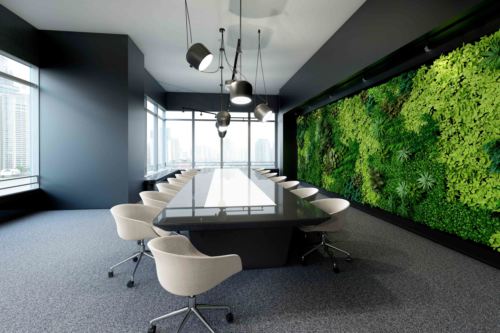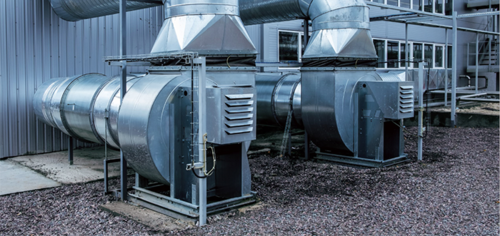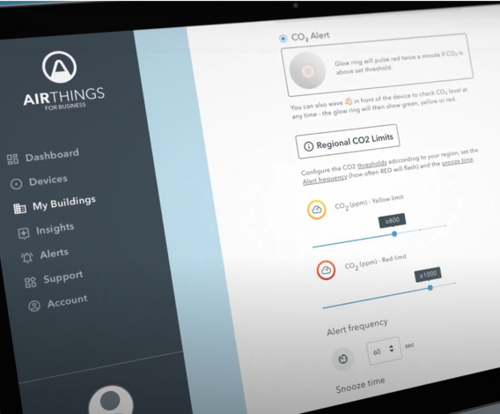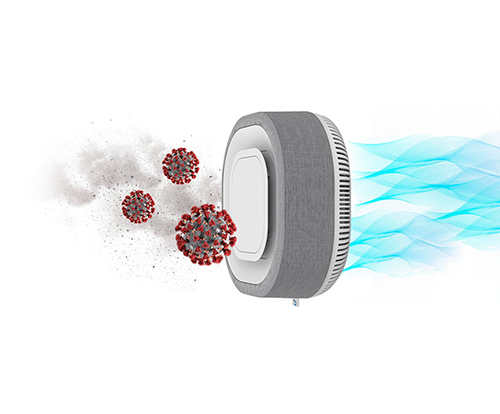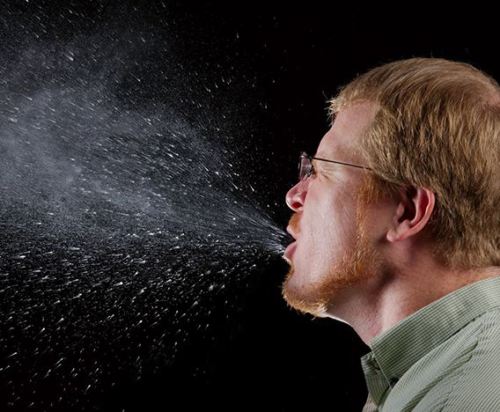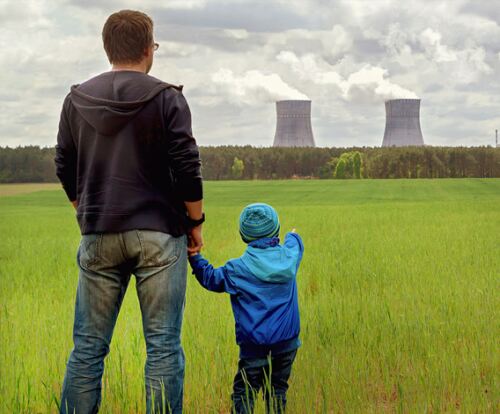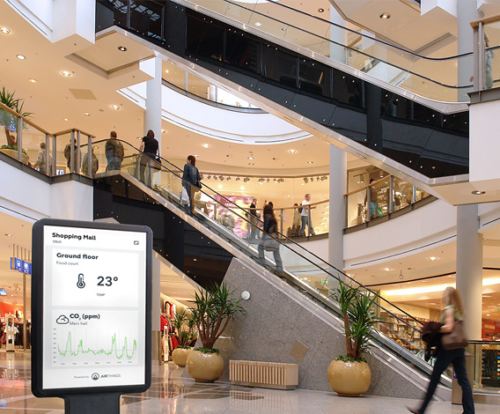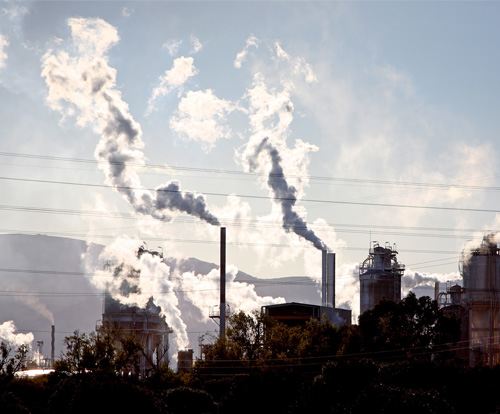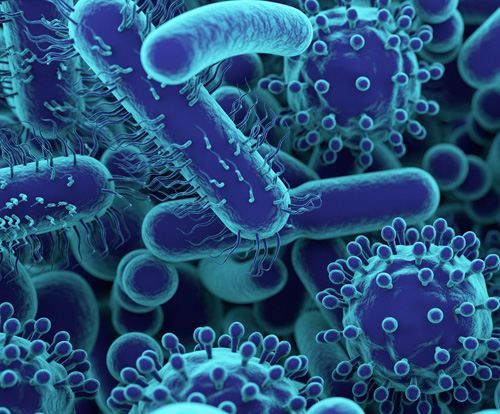
How air pollution affects our lives
Towns & cities|Workplaces|Schools|Homes
In our towns and cities
Outdoor air pollution
 According to the World Health Organisation (WHO), almost every home in the UK is affected by air pollution, with 97% of homes exceeding WHO limits for a least one out of three major pollutants, and 70% exceeding the limits in all three.
According to the World Health Organisation (WHO), almost every home in the UK is affected by air pollution, with 97% of homes exceeding WHO limits for a least one out of three major pollutants, and 70% exceeding the limits in all three.
Air quality in the UK is currently measured against the legal limits set by the EU. For PM2.5 and PM10 in particular, these legal limits are substantially higher than the guidance from the World Health Organisation.
There are ways that you can check the air quality in the city you live in and there are actions that can be taken to help reverse the effects of dirty air in our towns and cities. Click here to visit the Government’s air pollution map where you can search by city or postcode and filter by pollutant. Click here to see what the air quality is like outside your own home.
NO2 levels are predicted to improve substantially with the introduction of Air Quality Management Areas (AQMAs), the ultra low emission zone (ULEZ) in London and the replacement of petrol and diesel vehicles with electric versions.
While vehicles are the single largest source of both NO2 and particulate matter, there are a number of other major sources including agricultural practices, construction, commercial cooking, wood burning, boilers and generators.
People’s total exposure is determined by both outdoor and indoor pollution and the time they spend in each of these environments.
Air pollution is caused by numerous factors such as population density, number of vehicles on the road, local industry, wind direction and more, however, there are three main outdoor pollutants associated with poor health in inner cities, they are:
 NO2 (Nitrogen Dioxide)
NO2 (Nitrogen Dioxide)
Typically in areas of high vehicle traffic. Exposure to NO2 has been associated with a range of health effects including organ and neurodevelopment during pregnancy, new onset asthma in children and lung function decline in older adults.
 PM2.5 or particulate matter
PM2.5 or particulate matter
Such as soot, smoke, dust and liquid droplets measuring less than 2.5 micrometres in diameter. These tiny particles are of particular concern to our health because they can enter the bloodstream and lodge deep in our organs.
 PM10
PM10
Larger particulates 10 micrometres in diameter, they come from similar sources. PM of all sizes has been linked to chronic inflammation and is associated with similar health risks including lung development during pregnancy and early childhood, as well as the decline in lung function in older adults.

Serious health impacts associated with high levels of air pollution
City pollution affects every part of our lives, when we are sitting in our gardens, walking, driving, using public transport and on the school run.
In December 2020, Coroner Phillip Barlow called for a change in the law after air pollution led to the death of a nine-year-old girl, saying that, “there is no safe level of particulate matter" and called for national pollution limits to be reduced.
Ella Adoo-Kissi-Debrah, who lived near the South Circular Road in Lewisham, south-east London, died in 2013 after a fatal asthma attack. In a report to prevent future deaths, the Coroner said the government should reduce existing legally binding targets for particulate matter pollution to bring them in line with WHO guidelines.
Since then, in September 2021, the WHO adjusted almost all of its air quality guidelines downwards, slashing recommended safe limits in some cases by 75 percent and warning that exceeding the new levels would pose significant risk to health.
This means that across Europe and the UK, legal limits for NO2 are now four times higher than WHO recommendations, while legal limits for PM2.5 are now four to five times higher than the new guidelines depending on the area.
In the following video Ella’s mother speaks about the lead up to her daughter’s death:
Why do cities have more air pollution?
The sources of air pollution are intrinsically linked to how people live in cities. Cars and transport cause air pollution, however, nearly 70 percent of particulate matter is related to the built environment such as the heating of buildings, construction and the traffic related to it.
In our workplaces
 When we are at work we can also be affected by air pollution that can come from both indoor and outdoor sources. Buildings located near busy roads or in towns and cities can be affected by the ingress of outdoor pollution that includes particulate matter and NO2 caused by traffic. This pollution can enter a building through natural ventilation and through open doors and windows. It can also be brought into a building by a mechanical ventilation system, though these systems should have adequate filtration units to remove pollutants from the air, although older systems may not have activated carbon filters to remove NO2 and also may not be compatible with the latest HEPA filters. Filters should be replaced regularly as part of a regular maintenance regime. Indoor sources of air pollution include:
When we are at work we can also be affected by air pollution that can come from both indoor and outdoor sources. Buildings located near busy roads or in towns and cities can be affected by the ingress of outdoor pollution that includes particulate matter and NO2 caused by traffic. This pollution can enter a building through natural ventilation and through open doors and windows. It can also be brought into a building by a mechanical ventilation system, though these systems should have adequate filtration units to remove pollutants from the air, although older systems may not have activated carbon filters to remove NO2 and also may not be compatible with the latest HEPA filters. Filters should be replaced regularly as part of a regular maintenance regime. Indoor sources of air pollution include:
 Particulate matter
Particulate matter
PM is a mixture of solid particles and liquid droplets found in the air. It includes natural sources like pollen, dust, carbon and smoke from wood and coal burning, tyre and brake dust and industry emissions. PM is classified by size with the largest PM10 and the smallest PM2.5 and PM1. PM2.5 is 30 times smaller than the diameter of the average human hair.
Health effects
PM is small enough to be inhaled deep into the lungs and pass into the bloodstream where toxic particles can become embedded in vital organs like the heart and brain. It has also been proved that PM can carry and transport toxic compounds and biological agents including bacteria, viruses, and fungi. Children and the elderly and those suffering with heart and lung conditions are most vulnerable. According to figures published by NHS England, an average of 5% (1 in 20) of deaths in those aged over 30 can be attributed to PM2.5 air pollution.
Mitigation
Particulates can be filtered from the air using high quality filtration, either in mechanical ventilation systems or through the use of good air purifiers. In HVAC systems minimum efficiency reporting value or MERV filters are usually used with the higher the MERV rating, the better the filtration.
High efficiency particulate air or HEPA filters are designed for applications where contaminants must be trapped first time, for example, in a healthcare environment or when mechanical ventilation is not available and only the opening of windows can be used to increase ventilation, when air purifiers with HEPA filtration can be used.
 Volatile organic compounds
Volatile organic compounds
VOCs are organic chemical compounds that evaporate easily at room temperature, and usually have an odour. These artificial compounds can be found in the built environment and are emitted from an array of everyday items and activities. Concentrations of VOCs are 10 times higher indoors than outdoors due to the gases accumulating in enclosed spaces like homes, offices and other indoor environments. They are emitted from cleaning products, craft products/adhesives, children’s toys, paints and varnishes, candles and open fires, fragrances, cooking fumes, new furniture and floor coverings.
Health effects
The health effects of VOCs may be short term, like headaches, eye, nose, throat inflammation, irritation of skin, coughs, and painful breathing, even pneumonia and bronchitis. Long term effects include damage to the central nervous system (neurotoxicity), cardiovascular disease and impacts on the liver and kidneys.
Mitigation
Increasing ventilation rates to dilute indoor air with outside air can reduce concentrations of VOCs indoors and activated carbon filters can also filter out many chemicals and gases. Reducing the use of solvents, glues and varnishes, using low VOC paint, floor coverings and furniture reduces the likelihood of VOCs forming in the first place.
 Carbon dioxide
Carbon dioxide
CO2 is a greenhouse gas that is natural and harmless in small quantities, however, this gas, which each person exhales around 22,000 times each day, can have harmful effects on our health and wellbeing, when it accumulates indoors where we spend 90% of our time.
Health effects
Workplaces, schools and colleges frequently have very high levels of CO2 as rooms have high occupancy rates for significant periods of time throughout the day. When a room is filled with people CO2 levels rise quickly, and this directly affects the performance and cognitive functioning of room occupants, causing tiredness, drowsiness, lack of concentration and the increased transmission of viruses like Covid-19, flu and colds.
Mitigation
CO2 cannot be filtered and so the only way to reduce levels of this gas is to increase ventilation to dilute stale air with outside air. The opening of doors and windows will help if mechanical ventilation is not available but ideally you will want some form of mechanical ventilation to keep CO2 levels low, decrease the risk of virus transmission and increase the feeling of wellness amongst building occupants.
Buildings benefitting from a mechanical ventilation system should ideally set the system to six air changes per hour, meaning that six times the volume of the room is provided in external air every hour. At this rate 95% of contaminants in the air would be removed in 30 minutes. A consistent CO2 value below 800ppm is likely to indicate that an indoor space is well ventilated and levels higher than 1500ppm in an occupied room indicate poor ventilation and action should be taken to improve it.
 Radon
Radon
Radon is a naturally occurring radioactive gas released from the decay of uranium, thorium, and radium in rocks and soil. It is an invisible, odourless, tasteless gas that can enter homes through cracks in floors, walls, or foundations, and build up indoors. Radon levels can be higher in buildings that are well insulated, tightly sealed, and/or built on soil rich in the elements uranium, thorium, and radium.
Health effects
Radon decays quickly, giving off tiny radioactive particles. When inhaled, these radioactive particles can damage the cells lining the lungs. Exposure to radon gas is the leading cause of lung cancer in nonsmokers and is responsible for more than 2,000 deaths in the UK every year, according to the UK Radon Association.
Mitigation
The Ionising Radiations Regulations 2017 impose a duty on employers to protect workers from exposure to radon. Mitigation is relatively inexpensive with solutions including radon sumps and positive input ventilation (PIV) systems.
Ventilation and filtration are key
Better ventilation and filtration are key to slowing infectious disease transmission indoors, however, the value proposition of these strategies extends to cognitive function and productivity of workers, making healthy buildings key to public health and business strategy.
In our schools
School children are more vulnerable to air pollution
 Research commissioned by Asthma UK and the British Lung Foundation found that in 2019 (pre-lockdown) 8,549 educational establishments (27% of all schools and colleges) are situated in areas where levels of fine particulate matter (PM2.5) are above guideline limits recommended by the World Health Organisation (WHO).
Research commissioned by Asthma UK and the British Lung Foundation found that in 2019 (pre-lockdown) 8,549 educational establishments (27% of all schools and colleges) are situated in areas where levels of fine particulate matter (PM2.5) are above guideline limits recommended by the World Health Organisation (WHO).
The latest WHO guidelines state that annual average concentrations of PM2.5 should not exceed 5 μg/m3 (micrograms per cubic metre), whilst 24-hour average exposures should not exceed 15 μg/m3, more than 3 - 4 days per year. The current legal limit for PM2.5 in the UK is 20 μg/m3, four times the limit recommended by international health experts. Ultimately, scientists believe that there is no safe level of PM2.5 for humans to breathe in.
Levels of air pollution across the UK are at unsafe and illegal levels, with an estimated 40,000 early deaths each year linked to breathing polluted air. Research shows that more than 2,000 schools and nurseries in England and Wales are located in areas with illegal levels of pollution. Exposure to this air pollution can harm the development of lung function in the womb, during childhood and right up to the late teens. Children are at risk of developing long-term lung damage, whilst in the classroom and on the journey to and from school.
The WHO categorises air pollution as the largest global environmental health threat, with 93 percent of children around the world breathing polluted air every day.
The law requires school employers to protect pupils against risks to their health, so schools should have a policy on reducing risks to health from air pollution, and head teachers and school leaders should create an action plan.
Outdoor pollutants include:
There are many pollutants mixed with the air outdoors and concentrations and types of pollution depend on area, winds, local industry, agricultural and farming practices and more.
Listed below are the most abundant pollutants which are harmful to our health, but other local pollutants should be checked regularly, and you can do this here on the Government’s UK Emissions Interactive Map.
Indoor pollutants
Volatile organic compounds, which come from plastics, glues, disinfectants, and solvents PM2.5 which is a combination of fine dust and liquid droplets suspended in the air CO2 which can build up in poorly ventilated spaces as we all breathe out this gas around 20,000 times a day.
Radon is created when natural radioactive uranium slowly decays in the ground, and it seeps into buildings through cracks in floors and walls. Some parts of the country have higher levels of radon than others. You can use the Government’s Radon Map to find out where radon is high in the UK. Exposure to radon gas is the leading cause of lung cancer in non-smokers and is responsible for more than 2,000 deaths in the UK every year, according to the UK Radon Association.
Indoor biological contaminants
 There are a number of biological contaminants that can be a problem in indoor spaces, including damp and mould, pollen, allergens, dander, mites, insect debris, bacteria and airborne viruses.
There are a number of biological contaminants that can be a problem in indoor spaces, including damp and mould, pollen, allergens, dander, mites, insect debris, bacteria and airborne viruses.
Most of these contaminants can be filtered out of the air using HEPA filters, however, damp and mould usually highlights a problem with relative humidity and temperature, that is usually resolved through increasing ventilation rates and ensuring heating is set to between 18 and 22 degrees centigrade. Airborne bacteria and viruses can be dealt with to some extent through HEPA filtration and UV light, but ventilation is key, more below:
Virus transmission
 The recent Covid-19 pandemic revealed just how vulnerable children are to airborne viruses when in the classroom, with many poorly ventilated schools falling victim to super-spreader events. Recent studies of COVID-19 in several countries have identified links between air pollution and death rates, and more recent research has concluded that a small increase in air pollution leads to a large increase in the COVID-19 infectivity and mortality rate in England. This is important as many schools are sited near busy roads with high levels of pollution.
The recent Covid-19 pandemic revealed just how vulnerable children are to airborne viruses when in the classroom, with many poorly ventilated schools falling victim to super-spreader events. Recent studies of COVID-19 in several countries have identified links between air pollution and death rates, and more recent research has concluded that a small increase in air pollution leads to a large increase in the COVID-19 infectivity and mortality rate in England. This is important as many schools are sited near busy roads with high levels of pollution.
Why are CO2 monitors important?
Monitoring levels of CO2 highlights when a space is poorly ventilated, so that ventilation can be increased to dilute the air indoors with fresh air from outside – please note here, that outdoor air pollutants could seep into the building if adequate filtration is not available. Outdoor levels of CO2 are around 400ppm (parts per million), and indoors, consistent levels of less than 800ppm is likely to indicate a space is well ventilated. It is recommended to keep CO2 levels around 800ppm in classrooms, and where readings are consistently over 1500ppm, action should be taken to improve ventilation.
Ventilation is key
In our quest for energy efficiency and a reduction in carbon emissions, we have made our buildings more air tight, preventing natural ventilation. In short, many of our buildings simply cannot breathe! Of course, many commercial buildings bring in fresh air through mechanical ventilation units, and now the latest state of the art systems can automatically adjust airflow to suit the specific needs of rooms and zones, via building management systems, when they are linked to a network of air quality monitoring sensors. For older systems air handling units should be set to maximise outdoor air over recirculated air. It should be noted here that, some AC units only recirculate air and do not add fresh air to the mix. If your building has this type of system you should look to upgrade.
In our homes
 Virtually every home in the UK is subjected to air pollution above World Health Organisation guidelines with more than 97 percent of addresses exceeding WHO limits for at least one of three key pollutants, whilst 70 percent of addresses breach WHO limits for all three.
Virtually every home in the UK is subjected to air pollution above World Health Organisation guidelines with more than 97 percent of addresses exceeding WHO limits for at least one of three key pollutants, whilst 70 percent of addresses breach WHO limits for all three.
A map, produced by the non-profit group the Central Office of Public Interest and Imperial College London allows people to check air pollution levels outside their own home at addresspollution.org.
The WHO sharply reduced its guideline limits for air pollution in September 2021, to reflect the increasing scientific evidence of the harm to health caused by toxic air. Research concluded that air pollution may be damaging every organ in the body, causing at least 7 million early deaths a year worldwide and about 40,000 in the UK. The WHO says air pollution is the biggest environmental threat to human health and is a public health emergency.
So, it’s not just a problem outdoors in our towns and cities, at work and in the classroom but it’s in our homes too.
The problem with our homes
 Most homes in the UK do not enjoy mechanical ventilation and rely instead on natural ventilation where the building breathes through cracks in the walls. However, in a quest to reduce heating bills many older homes have been made more air tight, meaning they are more energy efficient yet have poor ventilation. Newer homes have also been built with energy efficiency in mind and these homes too can be poorly ventilated. As a result, many UK homes, especially flats have a problem with damp and mould growth which is harmful to health and can exacerbate existing health conditions.
Most homes in the UK do not enjoy mechanical ventilation and rely instead on natural ventilation where the building breathes through cracks in the walls. However, in a quest to reduce heating bills many older homes have been made more air tight, meaning they are more energy efficient yet have poor ventilation. Newer homes have also been built with energy efficiency in mind and these homes too can be poorly ventilated. As a result, many UK homes, especially flats have a problem with damp and mould growth which is harmful to health and can exacerbate existing health conditions.
High-rise flats and large homes are usually built to be as air tight as possible but usually ventilation is added through heating, ventilation and air conditioning systems (HVAC). A well maintained HVAC system with a regular and robust cleaning regime and which uses high grade filters ensures that fresh, filtered outdoor air is mixed with stale indoor air. In some cases, UV light is also used to kill viruses and bacteria and so significantly reduce the risk of virus transmission.
Most homeowners can only increase ventilation by opening windows and doors and whilst this dilutes the stale indoor air with fresh outdoor air, this air is not filtered and outdoor pollutants like PM2.5 and NO2 could enter the building. So, when it comes to the transmission of viruses indoors windows should be opened, but if you live in a highly polluted area like a town or city, or near a busy road, then it would be a good idea to use a good quality air purifier to filter the air using a HEPA filter for particles and viruses and an activated carbon filter for gases like NO2 and VOCs.
Ultimately, you may wish to consider installing a mechanical ventilation system, which introduces outside air into your home and extracts stale air through extractor fans. For most homes, positive input ventilation (PIV) unit would be the most cost-effective and easiest to install, however, new build homes would better benefit from mechanical ventilation with a heat recovery (MVHR) system.
Radon
Radon is created when natural radioactive uranium slowly decays in the ground, and it seeps into buildings through cracks in floors and walls. Some parts of the country have higher levels of radon than others. You can use the Government’s Radon Map to find out where radon is high in the UK. Exposure to radon gas is the leading cause of lung cancer in non-smokers and is responsible for more than 2,000 deaths in the UK every year, according to the UK Radon Association.
Radon detectors
As it’s undetectable by humans you will need to use a radon sensor of which there are two types, a lab test available online from UK Radon and a continuous radon sensor that monitors levels of radon 24/7. Many smart radon sensors also monitor other air pollutants like PM2.5, CO2, and VOCs along with contributing environmental factors like humidity, temperature and air pressure making them great value for money.
Reducing the causes of air pollution in the home
We can all take steps to control and reduce airborne pollution in our homes.
- Invest in a good indoor air quality monitor so you know when the air is poor and can take action to improve it. At the very least a CO2 sensor will alert you when CO2 levels are high, so you know ventilation needs to be increased.
- Cooking produces grease, smoke, smells and moisture so always switch on your cooker hood and any extraction fans during and after cooking. If you don’t have an extractor fan in the kitchen open windows.
- Avoid blocking or decorating over existing permanent ventilation features, such as air bricks and trickle vents in windows, as they allow air to circulate naturally when windows and doors are closed.
- Vacuum daily to remove polluting particles, preferably using a vacuum with an integrated HEPA filter to stop particles leaking back into the air.
- Keep humidity levels between 40 and 60 percent as high humidity levels can cause respiratory problems, and provide a breeding ground for mould spores, dust mites, clothes moths, fleas, and cockroaches. If you have no choice but to dry clothes indoors open windows to improve air circulation and use a clothes airer rather than drying directly on radiators.
- If you have a wood burning stove try to limit its use and only burn untreated, dry, seasoned wood with a moisture content of 20 percent or less.
- Ventilate when cleaning and decorating and use low VOCs paints and cleaning products
- Consider purchasing a good air purifier with a HEPA filter for particulates and an activated carbon filter for VOCs. Clean the filters regularly and change them when required.
- If your home has some form of mechanical ventilation system have it regularly serviced and keep the filters, and ducts clean.
- If you still have an ongoing issue with ventilation then consider having a PIV system installed and use a reputable installer with the right testing equipment to ensure the system will work in your home.
Latest Articles
The business risks emerging from the global COVID-19 pandemic
Read More >Why indoor spaces have a higher risk of virus transmission
Read More >Enhance HVAC performance, improve energy efficiency and reduce emissions
Read More >High absenteeism and reduced wellbeing
Read More >How does air quality affect your business
Read More >What the experts say
Read More >Risk indicators and monitoring
Read More >Ventilation and filtration
Read More >Transmission & Prevention
Read More >The History of Air Pollution
Read More >Ambient Air Pollution
Read More >Indoor air pollution & the indoor generation
Read More >Climate change and the climate emergency
Read More >What’s in the air we breathe outdoors?
Read More >What’s in the air we breathe indoors?
Read More >Other indoor biological pollutants
Read More >
